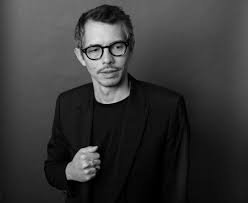Introduction
André Darreau is a name synonymous with both acclaim and debate in the realm of modern French art. As a painter, sculptor, and visionary, Darreau has profoundly impacted the art world with his evocative pieces, unique style, and at times, controversial perspectives. In this in-depth article, we’ll explore his life story, greatest successes, hidden challenges, and why he remains a compelling figure for both critics and admirers alike. Whether you’re a seasoned art enthusiast, a student, or simply curious about modern creative forces, this comprehensive guide will shed light on André Darreau’s journey, his inspirations, and his lasting legacy.
Table of Contents
Early Life and Background
Born in Paris in 1948, André Darreau was raised amidst the vibrant post-war art scene. His parents, both educators, encouraged curiosity and expression from a young age. By his teens, Darreau had already displayed a rare affinity for sketching urban landscapes, often incorporating themes of human struggle and societal change.
His formal training at the École des Beaux-Arts provided not only technical skills but also an exposure to the bohemian circles that shaped his worldview. Early works reflected the influence of modernist masters while maintaining a signature introspective touch.
Key Points:
- Darreau’s formative years were deeply influenced by post-war Paris and his academic environment.
- Early exposure to modernism and bohemian life shaped his artistic philosophy.
Rise to Artistic Fame
Darreau’s breakthrough came in the late 1970s with a solo exhibition at the Salon d’Automne. The show attracted critics and art lovers, especially for his bold use of color and emotional storytelling. Within a few years, his canvases graced galleries across Europe, from London to Berlin.
His ascent wasn’t without struggle. Rejections and financial hardship initially plagued his career. However, Darreau’s resilience and innovative approach—blending realism with abstract symbolism—ultimately led to recognition as one of the most dynamic forces in French modern art.
Key Points:
- First major success: solo show at the Salon d’Automne.
- Overcame early career setbacks through perseverance and innovation.
Signature Styles and Techniques
André Darreau is known for blending figurative realism with bold abstract elements. His work often uses intense palettes, thick brushwork, and mixed media. Many pieces convey urban isolation, collective hope, or the tension between tradition and progress.
Darreau’s unique technique includes layering oil and acrylic, often incorporating found objects and textual elements. This approach creates immersive, tactile works that invite viewers to examine both surface and depth.
Key Points:
- Fusion of realism and abstraction defines Darreau’s style.
- Mixed media and layering are hallmarks of his creative process.
Triumphs: Exhibitions and Major Works
Throughout his career, Darreau’s art has been showcased at prestigious venues such as the Musée d’Art Moderne de Paris and the Tate Modern in London.
His 1985 collection, Fragments of a City, is celebrated for its depiction of urban alienation and hope—a series now considered pivotal in European contemporary art. Another standout is his sculptural series Iron Memories, which explores the intersection of memory, material, and identity.
Internal Link Example:
- Discover more about contemporary art movements on art news trends.
- Explore top art exhibitions at gallery insights.
- Dive into modern artists’ profiles on modern art masters.
Key Points:
- Major exhibitions in Paris, London, and Berlin solidified his reputation.
- Fragments of a City and Iron Memories are his most influential works.
Controversies and Criticisms
Despite his acclaim, André Darreau has been no stranger to controversy.
Some critics argue his political themes are divisive, while others see his use of recycled materials as either visionary or gimmicky. In 1998, a gallery show featuring provocative urban decay sculptures drew heated public debate over what constitutes “true art.”
Nonetheless, Darreau has openly welcomed critique, seeing it as a catalyst for dialogue and progress in the art world.
Internal Link Example:
- Read about art world controversies at trending debates.
- Learn how artists handle criticism on creative resilience.
- Find more on public reactions to art at art world reactions.
Key Points:
- Political and material choices have sparked debate.
- Darreau views criticism as essential to artistic evolution.
Influence on Contemporary Art
Darreau’s impact is visible in the works of emerging artists who adopt similar methods of mixed media, urban themes, and social commentary.
His lectures at European art schools and mentorships have helped shape a generation of creative thinkers. The growing popularity of “urban abstraction” in French galleries is often attributed to his trailblazing work.
External Links Example:
- For more on modern art trends, see Wikipedia: Modern Art.
- See influential artists’ impact at Forbes: Modern Masters.
Key Points:
- Darreau’s approach has inspired the urban abstraction movement.
- His teaching and mentoring influence new generations of artists.
Personal Life and Inspirations
Little is known about Darreau’s private life, as he is fiercely protective of his privacy. What’s clear is that his art draws from personal experiences of loss, resilience, and transformation.
Travel, literature, and encounters with marginalized communities often inform his most poignant works. Darreau has cited writers like Camus and visual artists such as Francis Bacon among his key influences.
Key Points:
- Darreau’s personal experiences are integral to his creative output.
- Influences include existential literature and modern painters.
Legacy and Lasting Impact
André Darreau’s legacy is defined by both innovation and controversy. Museums worldwide continue to display his works, while art scholars debate his influence on contemporary aesthetics.
As new generations discover his art, Darreau’s ability to challenge norms and provoke thought ensures his place among the greats of modern European art.
Key Points:
- His legacy is a blend of bold artistic choices and critical dialogue.
- Darreau remains an influential, debated figure in the global art community.
Frequently Asked Questions
1. Who is André Darreau?
André Darreau is a renowned French artist known for his unique blend of realism and abstraction, influential exhibitions, and thought-provoking themes.
2. What are André Darreau’s most famous works?
His notable works include Fragments of a City and the sculptural series Iron Memories.
3. What controversies is André Darreau associated with?
Darreau has sparked debate over his use of political themes and unconventional materials, particularly in his late-1990s exhibitions.
4. Where can I view André Darreau’s art?
His art is featured in museums such as the Musée d’Art Moderne de Paris and various contemporary art galleries across Europe.
5. How has André Darreau influenced contemporary art?
He has inspired trends in urban abstraction and mixed media, with many emerging artists and students citing him as a key influence.
People Also Ask
1. What style of art is André Darreau known for?
André Darreau is best known for his fusion of realism and abstraction, often using vibrant colors and textured layers. His mixed media approach and urban themes have set him apart from his contemporaries, allowing him to address both personal and societal issues through his artwork.
This style has not only made his pieces visually striking but has also contributed to their emotional depth, earning admiration from critics and collectors worldwide.
2. Why is André Darreau considered controversial?
Darreau’s work often addresses political and social issues, using unconventional materials like found objects and recycled metals. Some critics feel that his approach is too radical, pushing the boundaries of what is traditionally accepted in the art world.
Despite this, his willingness to challenge norms has led to important conversations about the role of art in society, making his work both contentious and deeply influential.
3. What are some key exhibitions featuring André Darreau?
Major exhibitions include his breakthrough show at the Salon d’Automne and retrospectives at the Musée d’Art Moderne de Paris and the Tate Modern. These exhibitions showcased his evolution as an artist, from early figurative paintings to his later mixed media installations.
Many of these events also included interactive workshops, allowing audiences to engage directly with his creative process.
4. How can I learn more about modern artists like André Darreau?
To delve deeper into the world of modern art, you can explore online resources, attend gallery talks, or read expert blogs and trend analyses on sites like modern art insights and trending artists.
These platforms offer up-to-date articles, interviews, and exhibition highlights, making it easier for both enthusiasts and students to stay informed.
5. What long-term impact has André Darreau had on the art world?
Darreau’s legacy lies in his ability to inspire future generations, not only through his own artwork but also via teaching and mentoring. His influence can be seen in the rise of mixed media and urban themes in contemporary art, as well as in the dialogue surrounding the boundaries of creative expression.
Many art historians believe his bold approach has paved the way for greater diversity and experimentation in modern art.
Conclusion
André Darreau stands as a towering figure in the landscape of modern art—a creator whose triumphs and controversies continue to captivate audiences worldwide. Through innovative techniques, a fearless approach to challenging themes, and a commitment to artistic evolution, Darreau has secured his place among the most influential artists of our time. Whether you admire his genius or critique his choices, there’s no denying the lasting impact of his work on contemporary culture.




3 thoughts on “André Darreau: 7 Amazing Triumphs & Hidden Controversies”